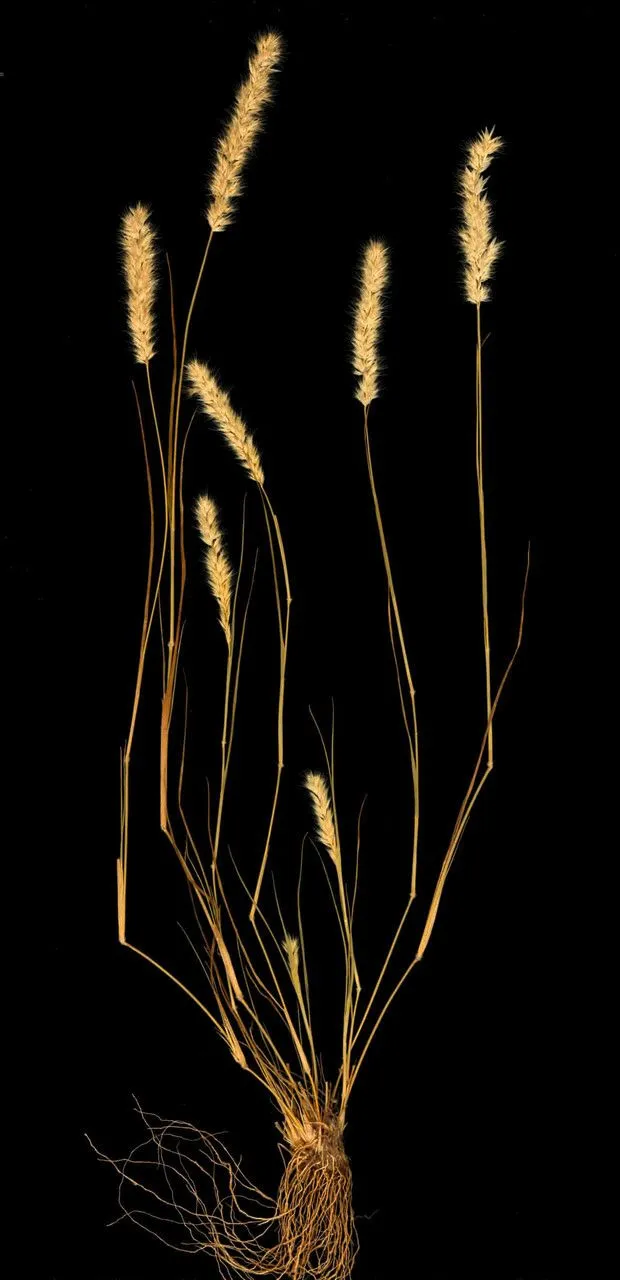
Author: P.Beauv.
Bibliography: Ess. Agrostogr.: 82 (1812)
Year: 1812
Status: accepted
Rank: species
Genus: Enneapogon
Vegetable: False
Observations: Africa, Temp. Asia to Indian Subcontinent, WC. U.S.A. to Mexico, Peru to Argentina
Feather pappus grass, known scientifically as Enneapogon desvauxii, is a fascinating and resilient species belonging to the Poaceae family. Originally described in 1812 by the botanist P. Beauv., this grass is noted for its remarkable adaptability and wide distribution.
This hardy grass can be found across various continents, thriving in a range of climates and regions. In Africa, it stands resilient against the diverse environmental challenges, showing a remarkable ability to adapt to both arid and more temperate conditions. Its journey extends across temperate Asia, sweeping through the Indian Subcontinent, showcasing its versatility in diverse habitats.
Crossing the Atlantic, Feather pappus grass establishes its presence in the western and central regions of the United States, stretching down into Mexico. Its reach doesn’t stop there; it continues further south across the Americas, making itself at home from Peru to Argentina. This extensive distribution speaks volumes about the grass’s adaptability and resilience.
The structural characteristics of Feather pappus grass contribute significantly to its robustness. The plant’s feather-like pappus aids in effective seed dispersal, allowing it to colonize new areas with ease. This feature, combined with its hardy nature, makes Enneapogon desvauxii an integral part of the ecosystems it inhabits, contributing to soil stabilization and providing forage for livestock in some regions.
In summary, Feather pappus grass (Enneapogon desvauxii) is more than just a grass. It is a testament to nature’s incredible adaptability and resilience, thriving across continents and a variety of climatic conditions. This species, with its widespread presence and ecological significance, underscores the importance of grasses in maintaining the balance within diverse ecosystems.
Eng: feather pappus grass, nine-awn pappus grass, spike pappus grass
Afr: kalkgras, wondergras
En: Feather pappus grass, Nine-awn pappus grass, Spike pappus grass
Af: Kalkgras, Wondergras
He: ציצן קצר
: Nineawn pappusgrass
© copyright of the Board of Trustees of the Royal Botanic Gardens, Kew.
© copyright of the Board of Trustees of the Royal Botanic Gardens, Kew.
© copyright of the Board of Trustees of the Royal Botanic Gardens, Kew.
Taken Jan 19, 2009 by Pierre-Emmanuel GAY (cc-by-sa)
Taken Sep 21, 2011 by Pierre-Emmanuel GAY (cc-by-sa)
Taken Sep 21, 2011 by Pierre-Emmanuel GAY (cc-by-sa)
Growth habit>: Graminoid
Family: Myrtaceae Author: (F.Muell.) K.D.Hill & L.A.S.Johnson Bibliography: Telopea 6: 402 (1995) Year: 1995 Status:…
Family: Rubiaceae Author: Pierre ex A.Froehner Bibliography: Notizbl. Bot. Gart. Berlin-Dahlem 1: 237 (1897) Year:…
Family: Sapindaceae Author: Koidz. Bibliography: J. Coll. Sci. Imp. Univ. Tokyo 32(1): 38 (1911) Year:…
Family: Asteraceae Author: A.Gray Bibliography: Pacif. Railr. Rep.: 107 (1857) Year: 1857 Status: accepted Rank:…
Family: Fabaceae Author: Medik. Bibliography: Vorles. Churpfälz. Phys.-Ökon. Ges. 2: 398 (1787) Year: 1787 Status:…
Family: Aspleniaceae Author: (Cav.) Alston Bibliography: Bull. Misc. Inform. Kew 1932: 309 (1932) Year: 1932…